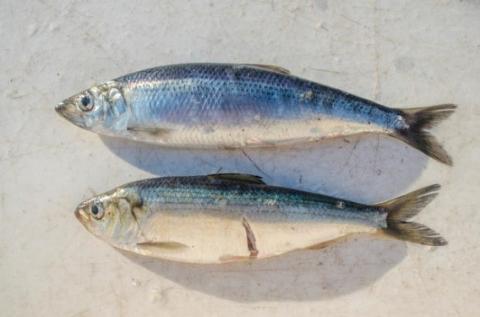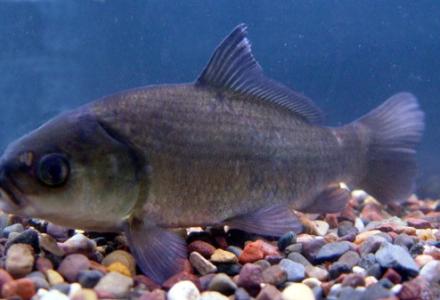
Alewives are returning to the St. Croix River in improved numbers, with 270,659 counted crossing the Milltown Dam – located between St. Stephens, New Brunswick, and Calais, Maine – as of the end of the counting season on July 18. Additionally, 255 American shad have been counted passing through the fish trap at Milltown Dam as of July 18, a massive increase over the 54 counted in 2017 and the 11 recorded in 2015.
These results were anticipated following the re-opening of the fishways several years ago, as alewives returned to what has been historically a major spawning habitat for them. The St. Croix River had been used by millions of alewives to spawn for centuries, providing food for people, birds, wildlife, and other fish.
“The St. Croix river has huge amounts of underexploited sea-run fish habitat and the potential to be the biggest producer of native sea-run alewives in the state,” said Sean Ledwin, director of the Sea-Run Fisheries Division for Maine Department of Marine Resources. “It is encouraging to see runs of river herring and shad improving.”

The alewife count past Milltown Dam totaled 16,677 in 2013 but rose over the course of the following years, with 157,750 counted crossing the dam in 2017. While there were low flows on the river in 2018, they had no noticeable impact on the returning alewives, according to Barbara Blumeris, secretary for the International St. Croix River Watershed Board.
This year’s alewife count is encouraging, but a long way from the healthy runs the river has seen historically, said Ed Bassett, multimedia Geographic Information System (GIS) specialist with the Passamaquoddy Tribe at Pleasant Point, and the tribe’s alewives expert. Historically, millions of fish – including alewives, shad, salmon, and American eels – traveled up the river to spawn from the Atlantic Ocean. The alewives in particular were a keystone prey species for other fish, animals and birds – including the American Bald Eagle - in the river system, and along with other fish were a major source of food and cultural connection for people living along its banks.
Starting in the 1800s, damming reduced the size of the alewife runs, but a fishway built at Milltown Dam in 1981 fueled a resurgence, with a returning population of 2.6 million alewives in 1987. This coincided with a decline of smallmouth bass in Spednic Lake, fueling a movement in Maine to block alewives that culminated in a 1995 law blocking fish passage past the Grand Falls and Woodland dams on the US side of the river. Studies showed that fears of alewives harming bass populations were unfounded, and the fishways were reopened at Woodland in 2008 and Grand Falls in 2013.
Bassett estimated that fish passage problems could occur if around 2 million fish try to return as they did in the 1980s, as the current passageway may serve as a bottleneck. He also notes that existing fishways were built primarily for salmon – which have yet to return to the St. Croix– and while alewives can and will use them, they are not constructed to be easily passable for other migratory species like American eel or shad.
As a result, these shad and eels may find it difficult to locate or traverse the fishway, and might injure themselves in the process. Downstream passage can be perilous too; if fish species get too close to the turbines they can be pulled in and killed.

The Passamaquoddy Tribe is working on a long-term fish passage restoration plan for the St. Croix River, with grant funding from the US Fish and Wildlife Service. A related effort is underway with the Peskotamuhkati band in New Brunswick using grant funds from the Canadian government. Bassett said there has been coordination between the two entities, as well as governments, outside organizations, and industry in developing the plan, which has been underway for about two years.
Bassett expects the plan to be completed within the next couple years, though funding would need to be available to implement recommendations.
Ultimately restoring sizable alewife runs to millions of fish could help revive fisheries that depend on them for food – Bassett said cod, pollock and haddock all prey on alewives and went into steep declines as the number of preyfish in the river dropped. The restoration should also be helpful toward bringing Atlantic salmon back into the river system in any significant numbers.
Heather Almeda, executive director of the St. Croix International Waterway Commission, said that at present, salmon are not returning to the St. Croix River, with the last recorded salmon swimming into the river in 2004.
The fish count and a portion of the fish tracking project is funded through the IJC’s International Watersheds Initiative, and reports are available on the IJC website.

Kevin Bunch is a writer-communications specialist at the IJC’s US Section office in Washington, D.C.




